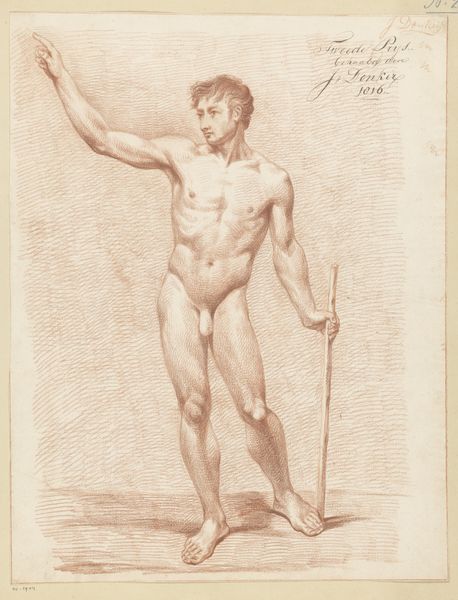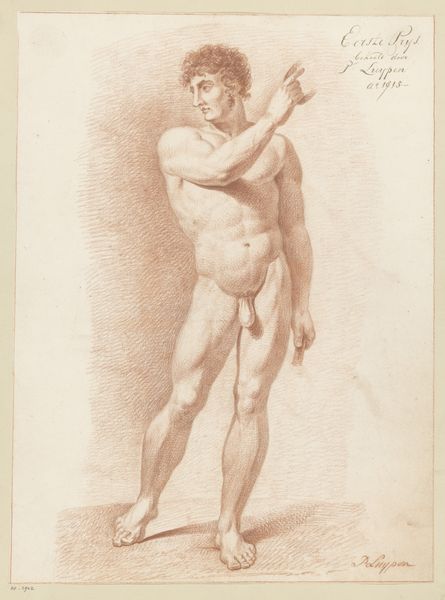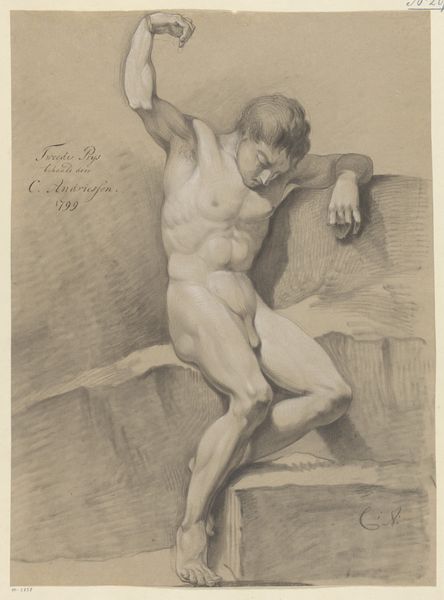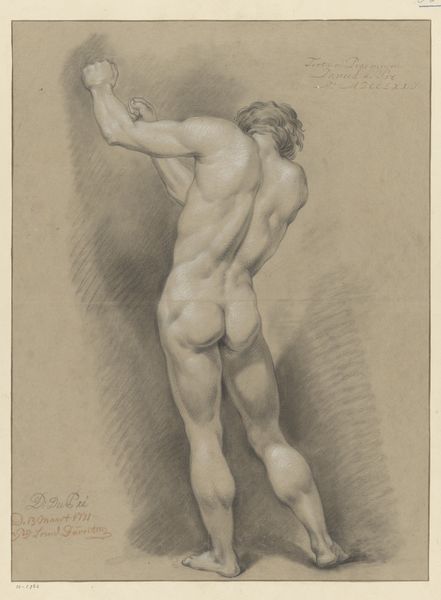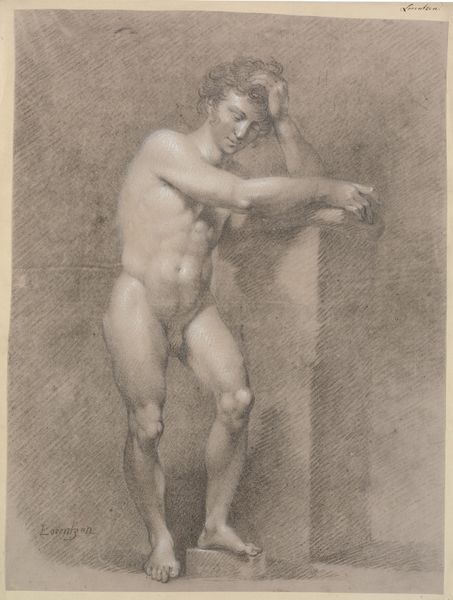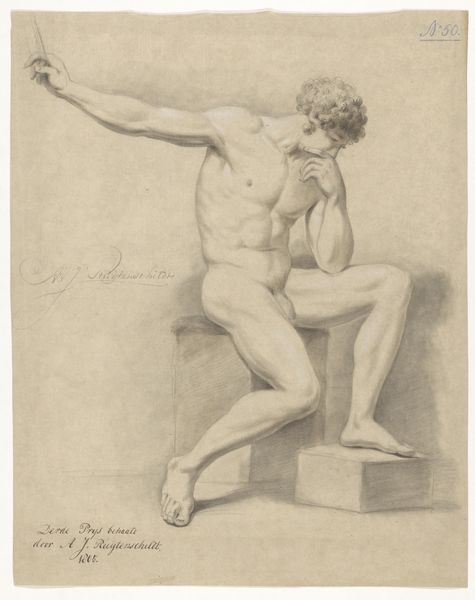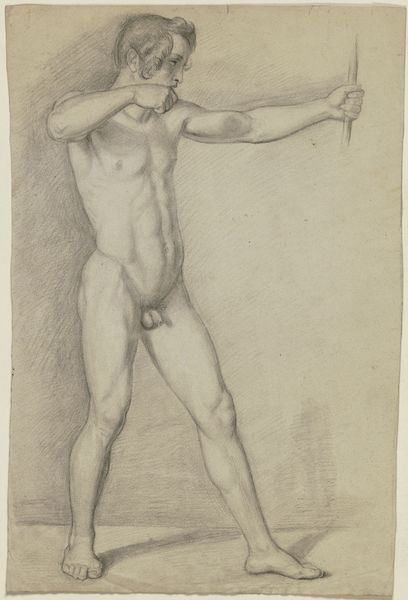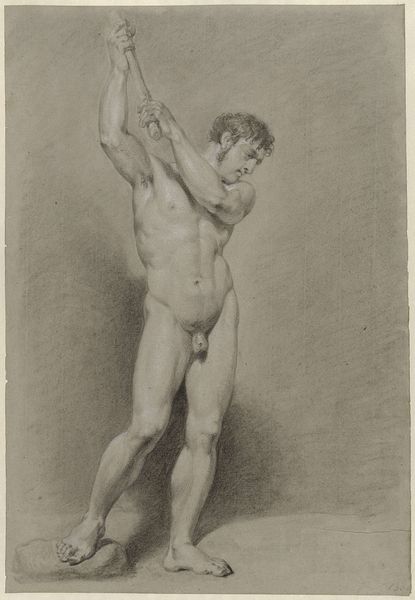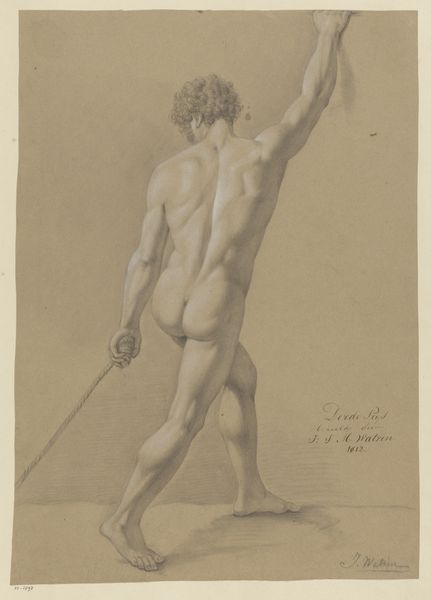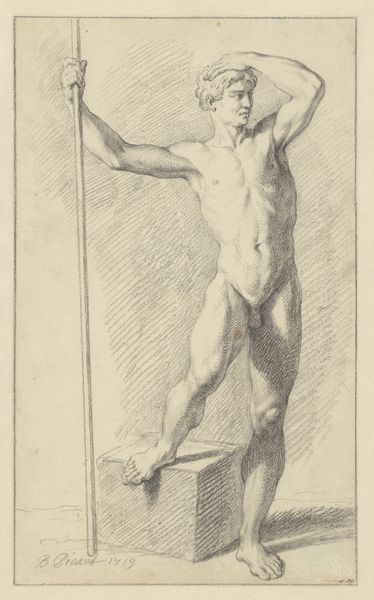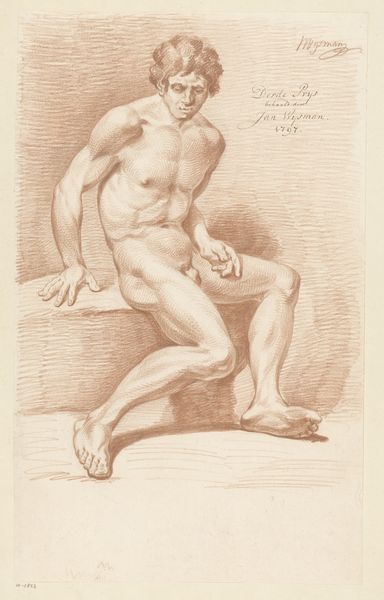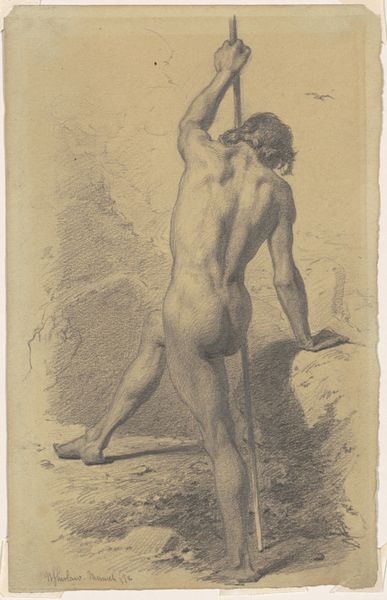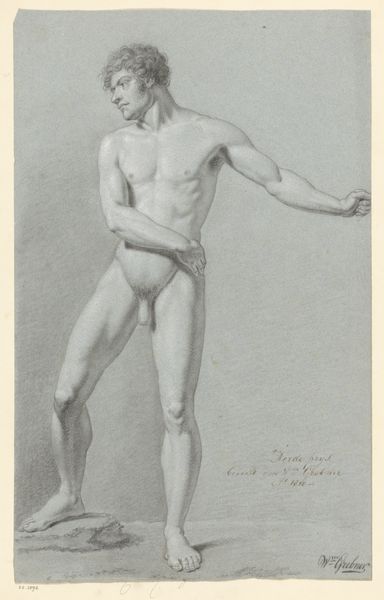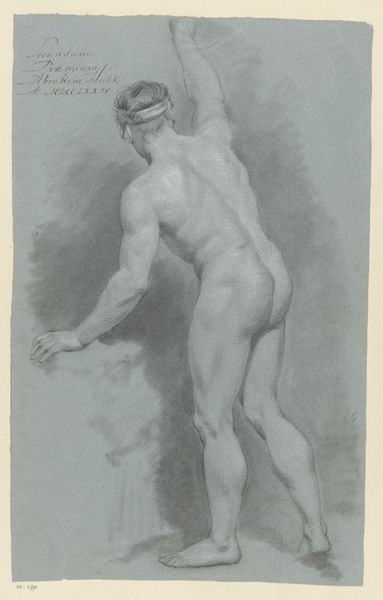
drawing, pencil
#
portrait
#
drawing
#
neoclacissism
#
classical-realism
#
pencil drawing
#
pencil
#
15_18th-century
#
portrait drawing
#
history-painting
#
academic-art
#
nude
Dimensions: height 488 mm, width 395 mm
Copyright: Rijks Museum: Open Domain
Curator: Here we have "Zittend mannelijk naakt, van opzij gezien (1e prijs 1777)", a pencil drawing likely completed around 1777 by Daniël Dupré. Editor: It's quite striking. The figure's straining pose and intense gaze create a palpable sense of tension. The grey pencil tones and minimal background emphasize this stark, almost dramatic moment. Curator: Indeed. This drawing, translating to "Seated Male Nude, Seen from the Side (1st prize 1777)", speaks volumes about the artistic training of the time, doesn't it? Academic art like this was heavily influenced by Neoclassicism, prioritizing idealized forms and historical painting. The "1st prize" in the title is quite revealing; this wasn’t just art, but also a formal demonstration of skill. Editor: I agree, one sees that immediately in the meticulous shading and attention to anatomical accuracy. The lighting is superb, accentuating the muscularity of the figure. It draws the eye along the body from the tension in the figure's outstretched arms to the solid foundation of its legs. There's a palpable energy conveyed by those diagonals, offset somewhat by the solid horizontals implied by the seat and backdrop. Curator: Right. The nude figure became a testing ground, laden with connotations that go far beyond simple representation. Here we can see echoes of classical sculptures and an ideal of masculine beauty and power promoted by art academies. Editor: I was wondering whether that rope signifies aspiration or even entrapment; it's a subtle addition that lends itself to varying interpretations, all within the formal structure, of course. Curator: Very astute. But that also brings us to how artistic institutions fostered certain ideals and suppressed others. The competitive nature of academic training shaped not only artistic styles but also what kinds of bodies and narratives were considered worthy of artistic attention. Editor: Well said. Analyzing it through that perspective does reveal layers of social meaning in the artwork, influencing not just art, but also broader social understandings of the human form. I hadn't initially considered it that way. Curator: Exactly. Seeing this pencil drawing now prompts questions not just of technique, but also of its historical moment. The artist and subject both are now ghosts in a world irrevocably altered. Editor: Agreed. Focusing on the image has been transformative. The history offers important contextual information as to this artwork's importance, and the piece becomes far richer with it.
Comments
No comments
Be the first to comment and join the conversation on the ultimate creative platform.
